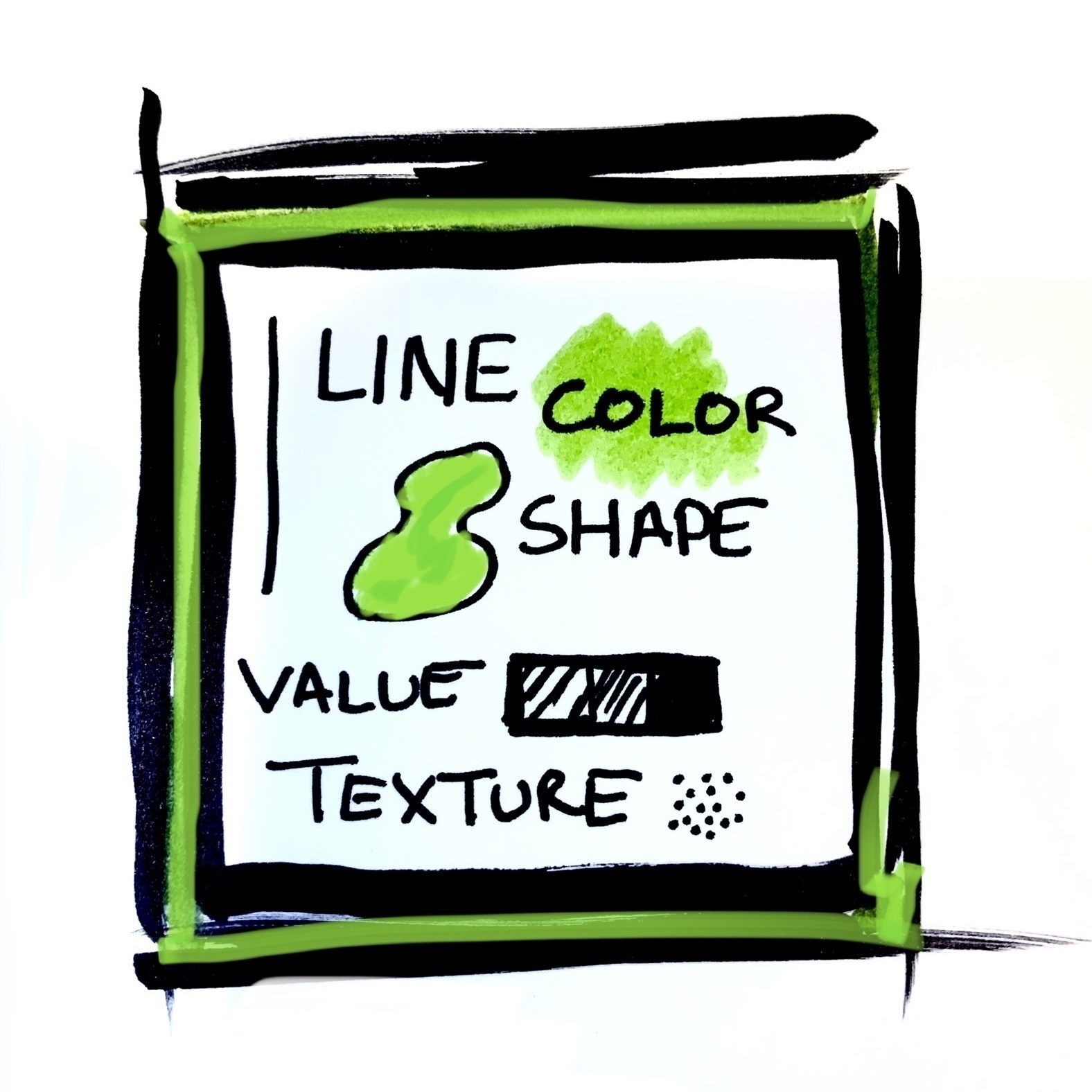
When you look at a visual design, you’ll see different elements working together in a complex way. When you look at a Starbucks logo (I love espresso) you might see line, shape, value, texture, color, space, and form. These design elements are what designers use to create visual design and are the basic visual components that are used to create visual art, graphic design, and other forms of visual communication.
There are several recognized elements of design, including:
1. Line: A continuous mark made on a surface that can vary in thickness, direction, and length. Lines can be used to define shapes, create texture, and convey emotion. The thickness of a line can really influence how something feels. Thinner lines feel elegant and clean. Thicker lines feel heavy and powerful.
2. Shape: A two-dimensional area that is defined by a boundary or outline. Shapes can be geometric, organic, or abstract, and can be used to create patterns, balance, and contrast. Shapes can be immediately recognizable and can help with brand recognition.
3. Color: The visual sensation produced by light waves of different wavelengths. Colors can be used to create mood, communicate meaning, and enhance the overall design. Did you know if you add red light, blue light, and green light equally, you get white? Pretty cool, eh? 4. Texture: The surface quality of a material or object, which can be visual or tactile. Texture can add depth, interest, and dimension to a design. I love using texture when designing something crude, raw, and edgy.
5. Value: The relative lightness or darkness of a color, which can be used to create contrast, highlight important elements, and create a sense of depth. It’s important when designing something with multiple colors to keep this in mind. Contrast is important, and most of the time, you don’t want values to blend.
6. Space: The area around, between, and within objects. Space can be used to create perspective, balance, and emphasis. Negative space is so important in design, and keeping a lot of white space can help something feel higher-end. That’s why a lot of fashion brands use a small typeface, dramatic photos, and tons of white space.
7. Form: A three-dimensional object that occupies space. Forms can be geometric, organic, or abstract, and can be used to create depth, volume, and dimension.
These elements can be combined and manipulated in a variety of ways and are essential to a designer’s toolbox. Keep It Simple Stupid is what my professors used to say. If you know the elements, you can tweak the elements when something just doesn’t look right.